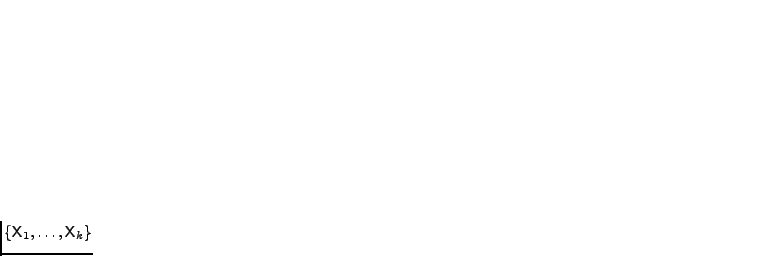 of observation sequences,
a (possibly infinite) set of LOHMMs structures, and a scoring function,
find the model structure that maximises the score.
of observation sequences,
a (possibly infinite) set of LOHMMs structures, and a scoring function,
find the model structure that maximises the score.
The increase in expressiveness of LOHMMs over traditional HMMs comes at the expense of a more complex model selection problem. Indeed, different abstraction levels have to be explored. Publication IX proposes a novel method for selecting logical hidden Markov models from data. The proposed method adapts structural expectation maximisation (EM) by Friedman (1997). It combines a generalised expectation maximisation algorithm, which optimises parameters, with structure search for model selection using inductive-logic-programming (ILP) refinement operators. Structural learning of traditional HMMs has not been very popular, only recently Won et al. (2006) applied genetic algorithms for that.
Given a set
 of observation sequences,
a (possibly infinite) set of LOHMMs structures, and a scoring function,
find the model structure that maximises the score.
of observation sequences,
a (possibly infinite) set of LOHMMs structures, and a scoring function,
find the model structure that maximises the score.
Selecting a structure of a LOHMM is a significant problem for many reasons. Firstly, extracting structures from experts can be a laborious and expensive process. Secondly, HMMs are commonly learned by estimating the maximum likelihood parameters of a fixed, fully connected model. Such an approach is not feasible for LOHMMs as different abstraction levels have to be explored. Finally, the parameter estimation of a LOHMM is a costly nonlinear optimisation problem, so the naïve search is infeasible.
The idea behind structural EM is to first infer the distribution over the hidden states and collect sufficient statistics about it. In the case of LOHMMs the sufficient statistics are the expected counts of how many times a ground transition is used. Then different model structures are evaluated based on those statistics. Evaluating new structures is thus made independent of the number and length of the data cases -- a feature which is important for scaling up.